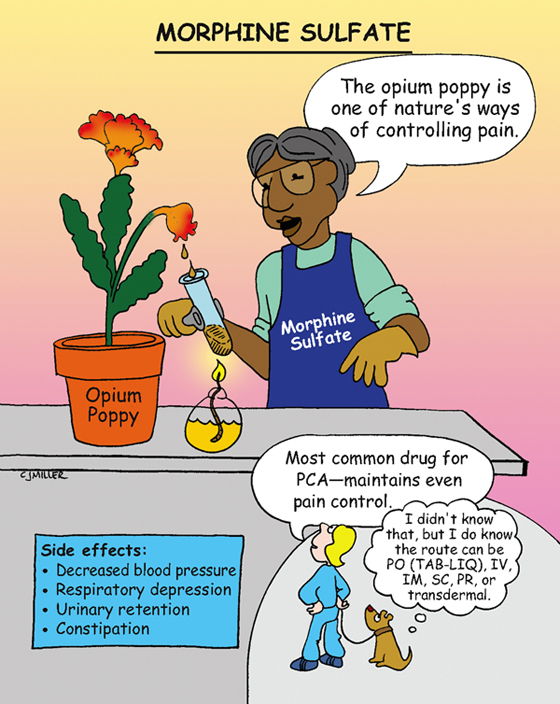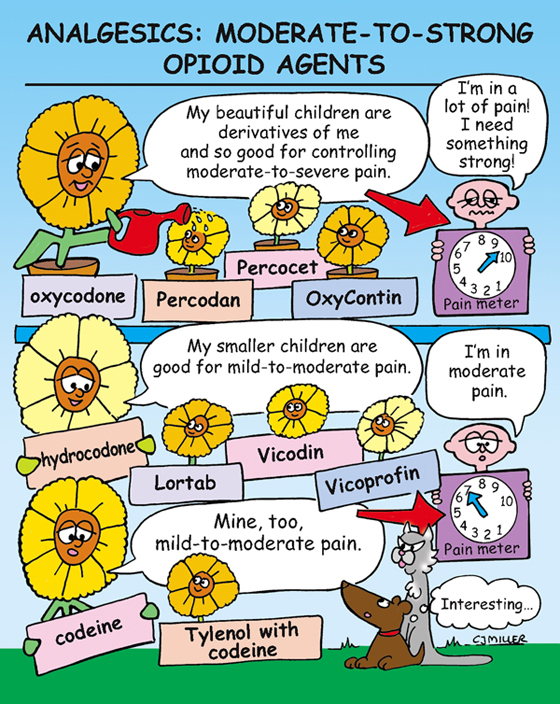Morphine Sulfate
CLASSIFICATION
Analgesic, opioid agonist
ACTIONS
Interacts at a specific receptor-binding site. Agonist activity at the receptor site can result in analgesia, euphoria, depression, hallucinations, miosis, and sedation. Alters pain at the spinal cord and higher levels in the central nervous system (CNS) (Schedule II on Controlled Substances Act).
USES
• Relieves mild-to-severe pain.
CONTRAINDICATIONS
• Hepatic and renal dysfunction
PRECAUTIONS
• Seizures, asthma, and severe respiratory depression
SIDE EFFECTS
• Urinary retention, **confusion**
• **Constipation,** nausea and vomiting
• Tolerance and physical dependency with long-term use
• Toxicity: coma, respiratory depression, and pinpoint pupils
NURSING IMPLICATIONS
1. Perform strict documentation and inventory assessment of narcotic.
2. *Assess pain and vital signs (especially respirations) before and after the dose; do not administer if respirations are below 12 breaths per minute.*
3. Infants and older adults are very sensitive to depression of respirations.
4. *Naloxone (Narcan) reverses the effect of morphine.*
5. Medication of choice for patient-controlled analgesic (PCA).
Analgesics: Moderate-to-Strong Opioid Agents
ACTIONS
Bind with receptors in the brain and spinal cord that are associated with pain. Moderate opioid analgesics are similar to morphine; however, pain control is less effective, and the potential for respiratory depression is less.
OPIOID ANALGESICS
• Percodan—combined with aspirin.
• Percocet—combined with acetaminophen.
• Combunox—combined with ibuprofen.
• Lortab—combined with acetaminophen.
• Vicodin—combined with acetaminophen.
• Vicoprofen—combined with ibuprofen.
• May also be combined with antihistamines and nasal decongestants for cough suppression.
codeine—PO, IV, IM, SQ Schedule II
• Tylenol with codeine (PO) for mild pain relief.
• Frequently combined with various agents for suppression of cough.
NURSING IMPLICATIONS
1. *Assessment is critical to effective pain control. Carefully assess patient’s level of pain and administer analgesic as ordered.*
2. Follow institution procedure for Controlled Substance Act.
3. Reassess patient 1 hour after administering medication.
4. *Administer medication before pain returns; fixed schedule of dosing may be more efficient than “as needed” dosing.*
5. *The majority of hospitalized patients do not receive adequate medication to relieve pain; therefore concern for addiction while hospitalized is usually not warranted.*









